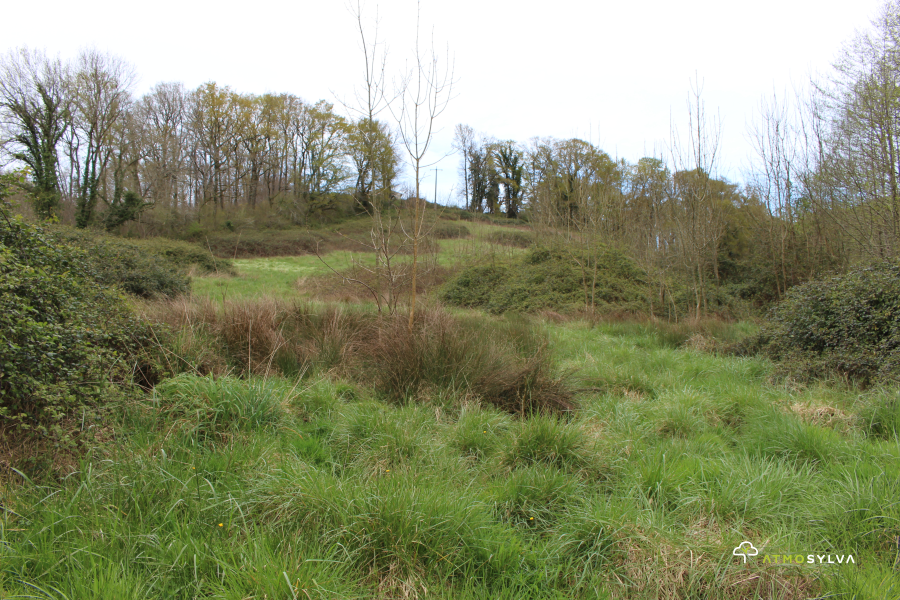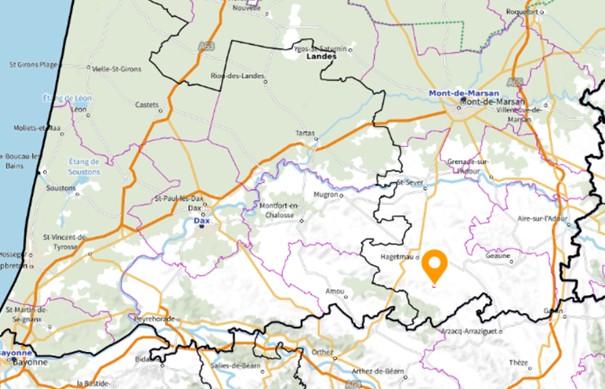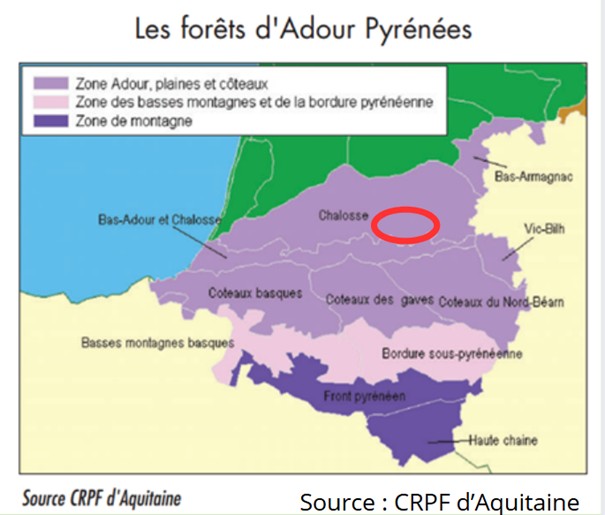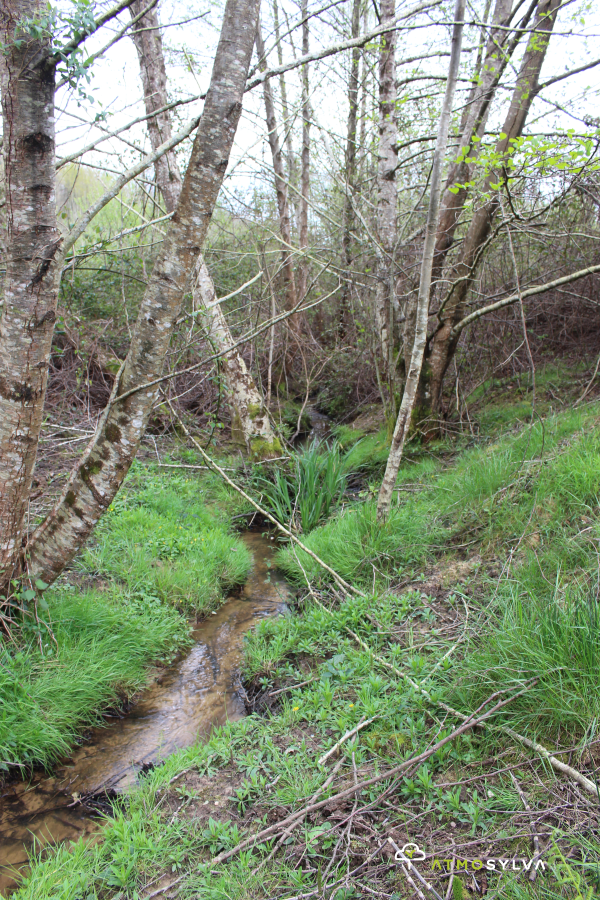Label Bas Carbone certified project
Located in Morganx, in the Landes region (40), in the heart of the Pays de l'Adour in the Nouvelle-Aquitaine region, this project covers 2.6 hectares of former pastureland that is now becoming overgrown. The site, located 52 km from Dax, 38 km from Mont-de-Marsan and 9 lm from Hagetmau, will be reforested whith a diversity of specires in three distinct zones: a mixture of pubescent Oak, Beech and Hornbeam to promote biodiversity, a stand of Taeda Pine for timber production, and a plantation of Poplars. The project forms part of the continuity of existing wooded areas, reinforcing the local forest network.
Crossed by a temporary watercourse, the site incorporates ecological management of the banks: the existing shrub borders will be retained to préserve the riparian zone and maintain natural shade. The island of poplars will be planted on the edge of the stream beyond the riparian zone, while the pines, located further north, will be planted more than 10 m from the watercourse to avoid any acidification of the aquatic environment. This approach makes it possible to reconcile forestru production with the protection of aquatic ecosystems, while at the same time enhancing the value of an agricultural wasteland by afforesting it.

Morganx, Landes (40), in the Pays de l'Adour
2,6 ha planted
Taeda pine (incense pine), Pubescent oak, Hornbeam, Beech, Poplar
About 2780 trees



The project is located in southern Landes (40), on the border with Pyrénées-Atlantiques, in the Pays de l'Adour region. This region is characterized by a landscape of hillsides and bocage hills, offering a marked contrast to the uniformity of the ocean and the Pyrenean mountains, is marked by decreasing rainfall towards the east, away from the coast and the Basque mountains, known for their mild, humid climate.
Land use in this area is dominated by agricultural land, with very limited forest cover, in stark contrast to the rest of the Landes department, where forests occupy around 61 % of the territory. This underlines the importance of afforestation projects such as Morganx, which help to prolong forest ecosystems in a predominantly agricultural landscape, while strengthening local ecological and climatic resilience.
The wooded parcel will be the subject of a sustainable management document to be created: Once the financing has been set up, the owner will adhere to a Code of Good Silvicultural Practice introduced by the Centre National de la Propriété Forestière (CNPF).
The project is in line with the Label Bas Carbone afforested method, a certification examined and issued by the French Ministry of Ecological Transition (DREAL)

This project combines forestry production and ecological diversity, thanks to the use of species adapted to different wood uses. Taeda pine, renowned for its rapid growth and resistance, will be planted for lumber production, while poplars will provide quality wood for a variety of applications. This approach provides economic value to the plot while promoting a resilient forest ecosystem.
To the east of the site, facing north, an island will be dedicated to deciduous speciers - Pubescent Oak, Hornbeam and Beech - extending an existing neighboring stand. This ecological continuity enhances local biodiversity and creates a corridor favorable to flora and fauna. These species, adapted to the climate and soils, will contribute to the long-term stability of the environment.
The project incorporates wetland-friendly management: Poplars will be planted along the temporary watercourse beyond the riparian zone, while the existing shrub borders will be preserved to maintain the riparian zone and its ecological role. The Pine trees, located further north, will be set back at least 10 m from the stream to avoid any acidification of the environment.
The project relies on local players, with Entreprises de Travaux Forestiers (ETF) located within a 50 km radius, guaranteeing local management. As part of a PEFC-certified supply chain, it supports jobs that cannot be relocated - managers, nurserymen, lumberjacks - and contributes to a virtuous circular economy. This approach ensures the sustainable development of resources while boosting local employment.